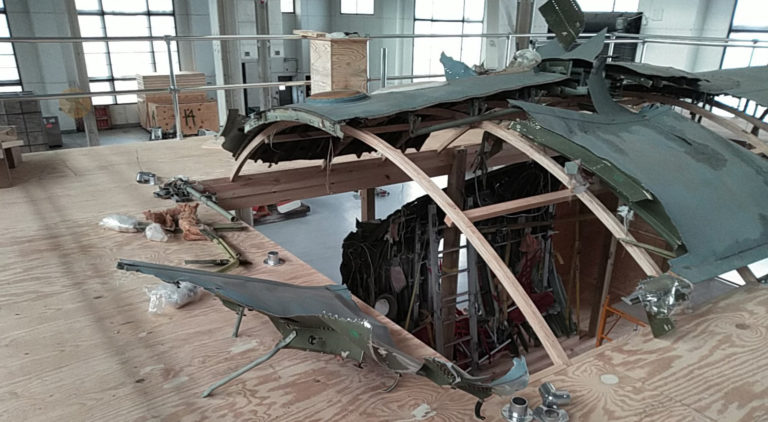The historic Naval Air Station in Florida was left severely damaged after Hurricane Sally during COVID-19. 433 of 500 buildings were damaged by flooding, and many suffered damage from wind and rain. Repairs for this damage experienced several delays from other weather events.
ATI provided roof repairs, water extraction, mold remediation, and addressed interiors and contents in about 150 buildings, including active buildings, high security buildings, and historic buildings. Offsite staging and all necessary COVID-19 precautions were also implemented during the entire two and a half month project.
The Situation
Days after Hurricane Sally devastated buildings, spread debris and dumped torrential rain on a Naval Air Station in Pensacola, Florida, ATI Restoration assessed the damage and sprang into action.
The historic 8,400-acre station, which employs 16,000 troops and 7,400 civilian Navy personnel, houses the iconic Blue Angels flight demonstration team. The storm left it largely without power. Cellphone and internet communications in the area were sporadic.
Winds in excess of 100 miles per hour blew the roofs off aircraft hangars and on-base homes, and more than two feet of rain drenched interiors. Of the Naval Air Station’s 500 buildings, 433 were affected by the storm and ATI assessed about 150.

The Solution
ATI repaired roofs on more than 60 structures, using synthetic underlayment, spray polyurethane foam or peel-and-stick membrane. ATI extracted water, conducted mold remediation, demolished interiors and performed contents services for more than 100 buildings.
Highly trained workers stabilized the hospital and other medical facilities, day care centers, youth centers, hotels, retail operations, restaurants, barracks, a post office and other buildings, some more than 100 years old. ATI often had to work around people or ongoing operations, some in highly secured buildings.

An offsite staging area was established, and COVID-19 protocols were implemented, including mandatory facemasks and social distancing. Workers’ temperatures were checked, and personal protection equipment was distributed as needed. To increase efficiency and productivity, ATI provided a food truck, eating area and bathroom facilities so team members would not have to leave and re-enter the station’s checkpoint throughout the day.
ATI averaged 130 workers on the site. Six catastrophe trailers housing all the necessary equipment were required at the height of the project. Though the work paused for subsequent weather events, it was completed in two and a half months.